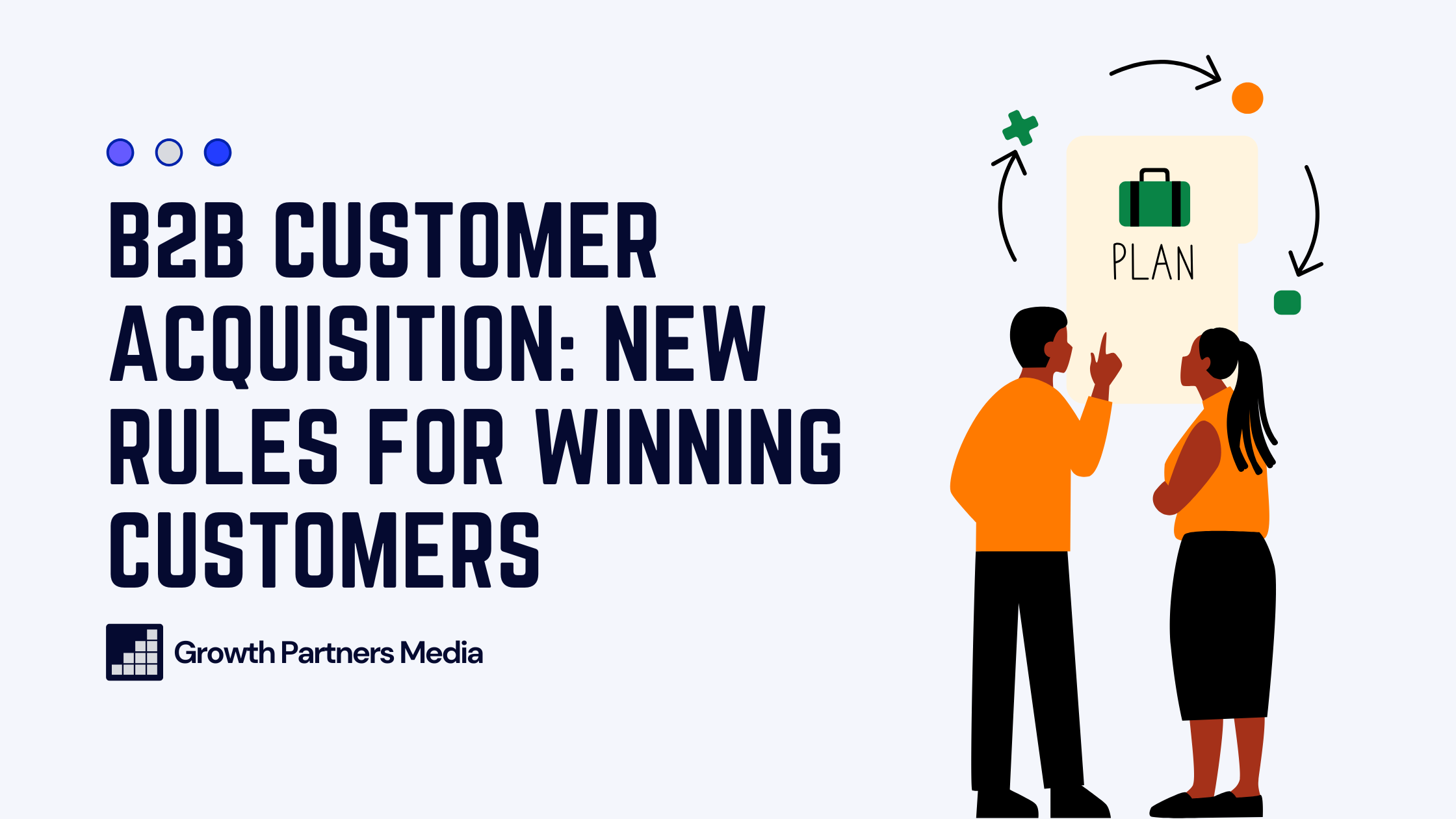The way businesses acquire B2B customers isn’t just evolving—it’s being rewritten in real time.
What worked in 2024? Already losing steam.
- Funnels are breaking.
- Cold outreach is fading.
- Decision-makers trust peers more than sales reps.
We’re in an era where AI-powered automation, tighter data privacy laws, and shifting buyer behavior are forcing companies to rethink everything about customer acquisition.
If you’re still relying on outdated playbooks, you’re already behind.
I’ve seen it firsthand—working with B2B companies across industries, we’ve watched once-reliable acquisition channels fade into irrelevance while new, unexpected strategies take their place.
The companies winning today? They’re the ones adapting fast.
Here’s what I’ll cover in this guide:
- The biggest shifts reshaping B2B customer acquisition now.
- Why outdated strategies are failing—and what to do instead.
- How innovative companies are staying ahead with AI, first-party data, influencer marketing, and new sales models.
This isn’t just another list of tactics.
It’s a playbook for what’s next—designed to help you win more customers in 2025 and beyond.
Let’s dive in.
TL;DR: What’s Changing in B2B Customer Acquisition?
B2B customer acquisition isn’t just evolving—it’s being disrupted.
What worked last year? Already fading.
It’s no longer about just getting leads—it’s about lowering CAC, maximizing CLV, and keeping high-intent buyers engaged long-term.
Want to refine your strategy? Start by using our CAC and Year-Over-Year Growth Calculators to get your numbers dialed in before you optimize.
The companies that win will be the ones that attract, convert, and retain customers more efficiently than ever.
Here’s a quick breakdown of the biggest shifts shaping B2B growth — and what they mean for your acquisition strategy:
|
Trend |
What’s Changing? |
Impact on B2B Customer Acquisition |
|
🤖 AI & Automation in B2B Lead Generation |
AI is replacing manual prospecting. |
Faster, more accurate lead qualification. |
|
🔐 First-Party Data Becomes Essential |
Stricter data privacy laws limit third-party tracking. |
Companies must build direct relationships with leads. |
|
🎤 B2B Influencer Marketing is on the Rise |
Decision-makers trust personal brands over company ads. |
Thought leaders now drive more conversions. |
|
🌐 Dark Social & Community-Led Growth |
B2B buyers rely less on traditional sales funnels. |
Companies must engage in niche communities. |
|
🛒 Hybrid Sales & Self-Serve Models Dominate |
B2B buyers want frictionless, low-touch sales experiences. |
Businesses must optimize for self-serve acquisition. |
Winning this year and beyond means adapting fast.
AI, trust-based marketing, and frictionless sales aren’t just trends—they’re the new battlegrounds for reducing CAC and increasing CLV.
The companies that move first? They’ll lead the market.
And with the right strategy, you’ll be one of them. Let’s get to work.
The Death of Traditional B2B Customer Acquisition Strategies
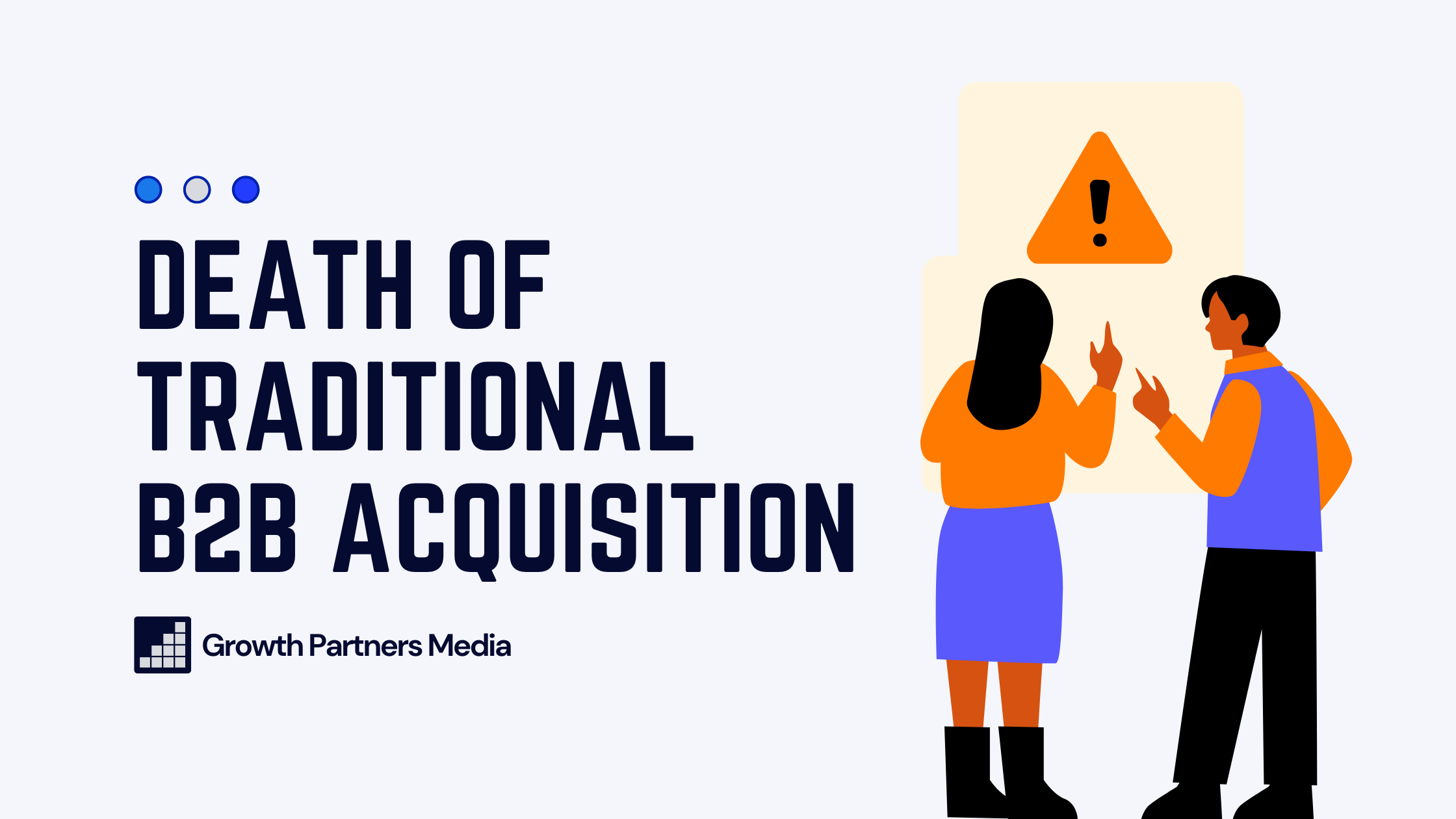
The old playbook for B2B customer acquisition?
It’s not just outdated—it’s actively working against you.
The way buyers evaluate and purchase solutions has fundamentally changed, and the companies clinging to old tactics are bleeding leads, time, and money.
Here’s a short list of what no longer works:
🚫 Cold email blasts & spray-and-pray outbound → Buyers demand relevance and value over anything else. Mass outreach with generic messaging is ignored.
🚫 Over-reliance on third-party data & tracking → With stricter data privacy laws, businesses can’t rely on retargeting like they used to. The future? First-party data, intent-based marketing, and direct customer relationships.
🚫 Traditional gated content lead gen → B2B buyers expect open access to insights before they commit. Hard paywalls turn them away—while competitors who freely share value earn their trust (and their business).
Why have B2B buyers evolved?
Today, nearly 80% of buyers prefer to navigate the purchasing process on their own terms—researching, comparing, and making decisions without the traditional hand-holding of sales teams.
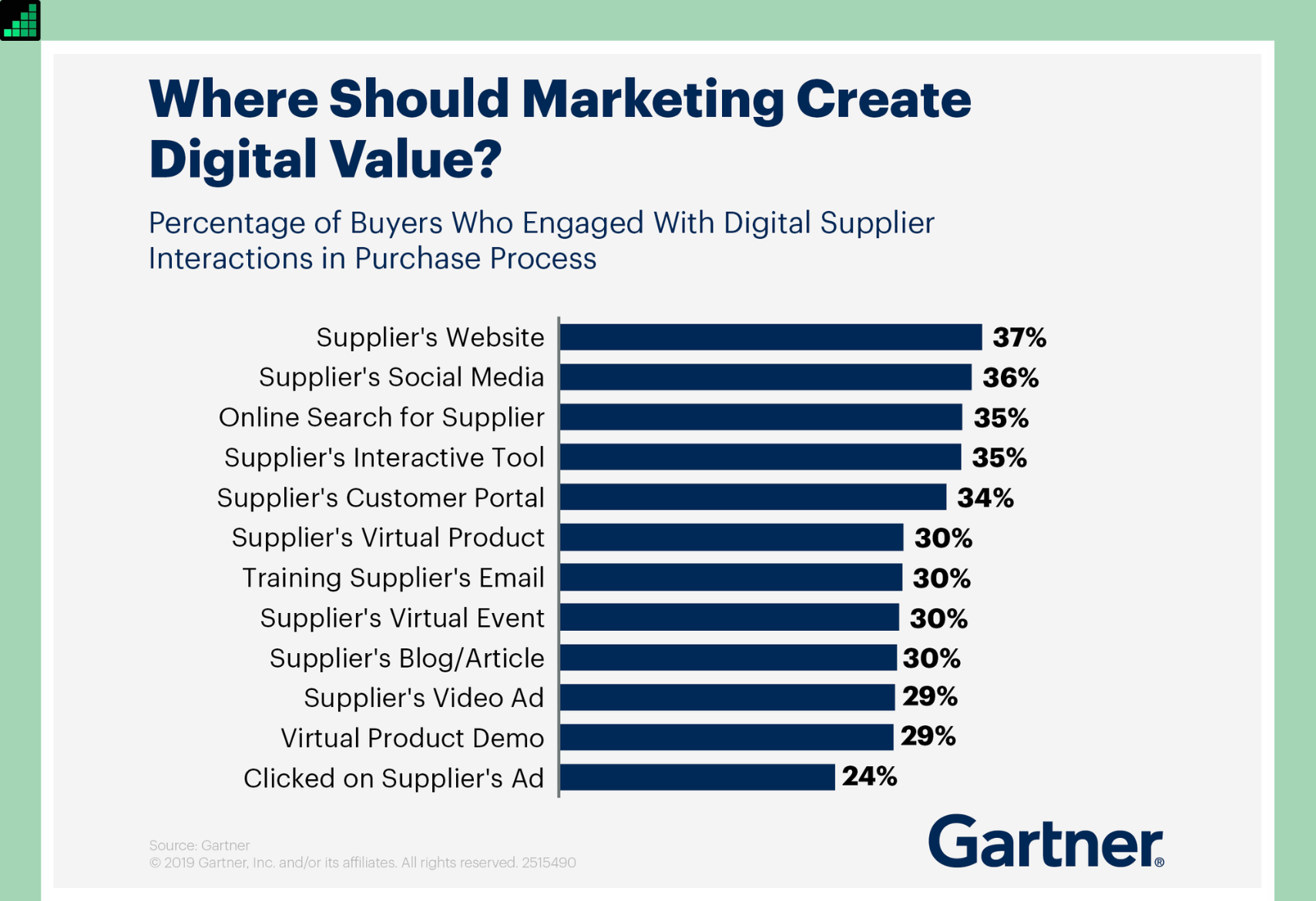
This shift isn’t just about convenience; it reflects a growing skepticism toward corporate marketing and sales teams.
Instead of taking a company’s word for it, buyers now turn to trusted communities, industry peers, and influential thought leaders for real insights.
Meanwhile, dark social—those private spaces on Slack, Reddit, and LinkedIn—have emerged as the new frontier for genuine, unfiltered conversations.
In this environment, traditional sales tactics simply can’t keep up.
- Cold calls? Left unanswered. 🚫
- Generic email pitches? Straight to spam. 🚫
Understanding these changes isn’t optional; it’s essential for anyone looking to succeed in today’s B2B landscape.
Winning B2B customers requires meeting them where they are—on their terms.
Let’s dive into the strategies that will actually work in the future. ⬇️
Today’s Effective B2B Customer Acquisition Strategies
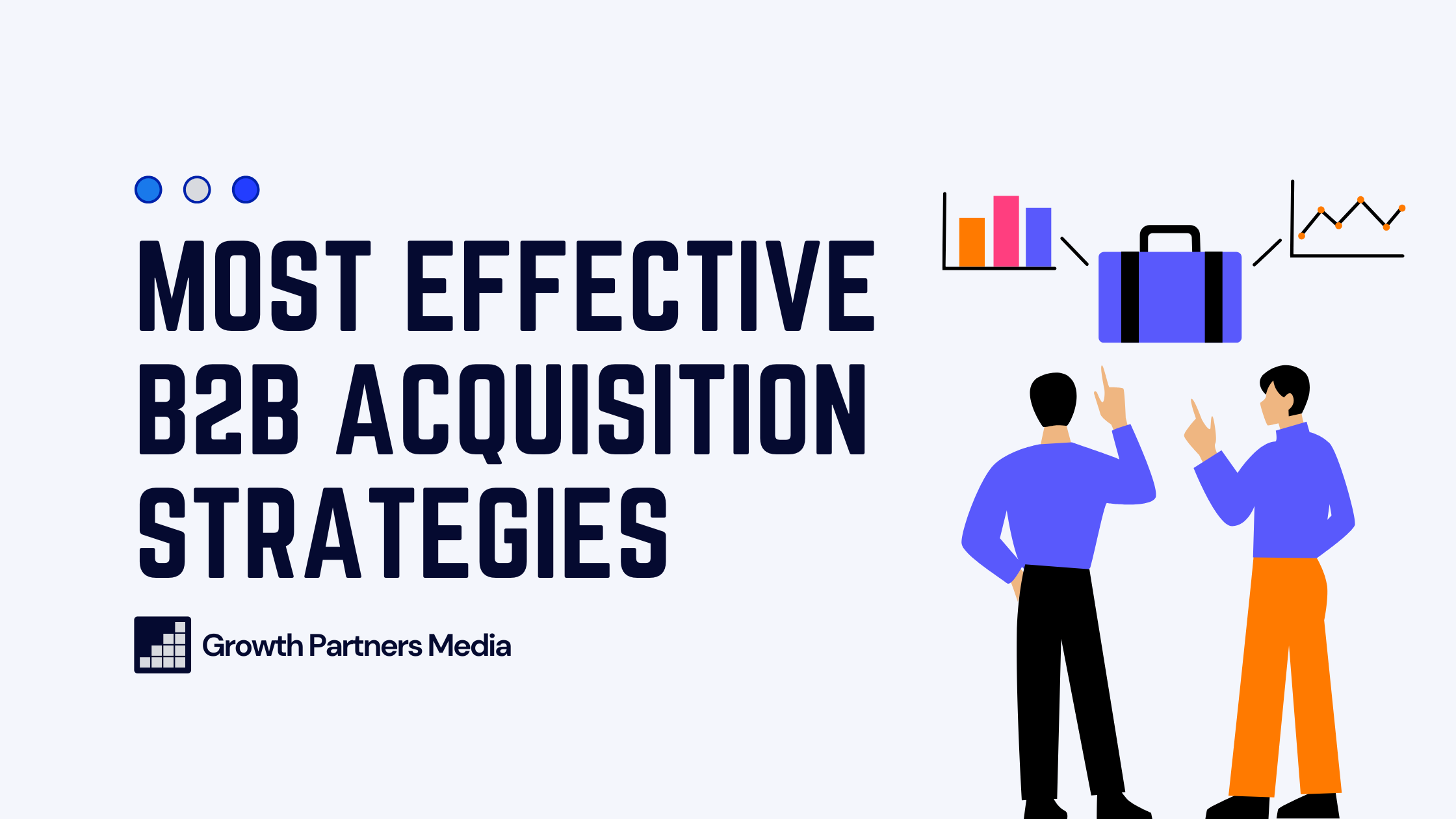
The rules of B2B customer acquisition have changed—again.

Yes.
We all know AI is everywhere, but is it actually delivering results?
Yes, AI is helping businesses move faster—but it’s not a magic bullet.
Despite the hype, many AI-driven cold outbound tools are underperforming in real-world applications, with poor response rates and unconvincing personalization.
Meanwhile, buyers are bypassing sales teams, trust is shifting from brands to individuals, and SEO is more critical than ever as companies look for sustainable, high-intent lead generation.
So what’s actually changing?
Let’s break down the strategies that really move the needle.
AI & automation: Smarter B2B lead generation or just more noise?
AI isn’t replacing sales teams, but it is reshaping how they operate.
Here’s where AI is actually delivering results and where the hype falls flat:
✅ AI chatbots that qualify leads 24/7 – Works well for handling basic inquiries and initial prospecting but still lacks the depth to replace real conversations.
✅ Predictive analytics for lead scoring – Useful for prioritizing high-intent buyers—but only when paired with strong first-party data (which many companies still lack).
❌ Automated cold outreach sequences – Mass AI-driven emails aren’t cutting it—most still feel robotic, generic, and get ignored. Personalization and true relevance require human oversight.
✅ AI agents for proactive engagement – The real game-changer isn’t just automation—it’s AI agents that act as intelligent sales assistants, engaging leads in real-time conversations across multiple channels.
The reality?
AI enhances sales—it doesn’t replace smart strategy, human relationships, or high-quality content. Companies betting on AI alone will lose to those that integrate it strategically while keeping a human edge.
Here’s an example:
LinkedIn’s sales team faced a challenge: too many leads, not enough insights on which ones were actually worth pursuing.
Enter Account Prioritizer, an AI-powered tool built to predict customer growth and upsell potential.
Instead of relying on manual prospecting, the system used machine learning to analyze engagement patterns, past interactions, and intent signals—pinpointing high-value accounts automatically.
Here’s how it can look in practice:
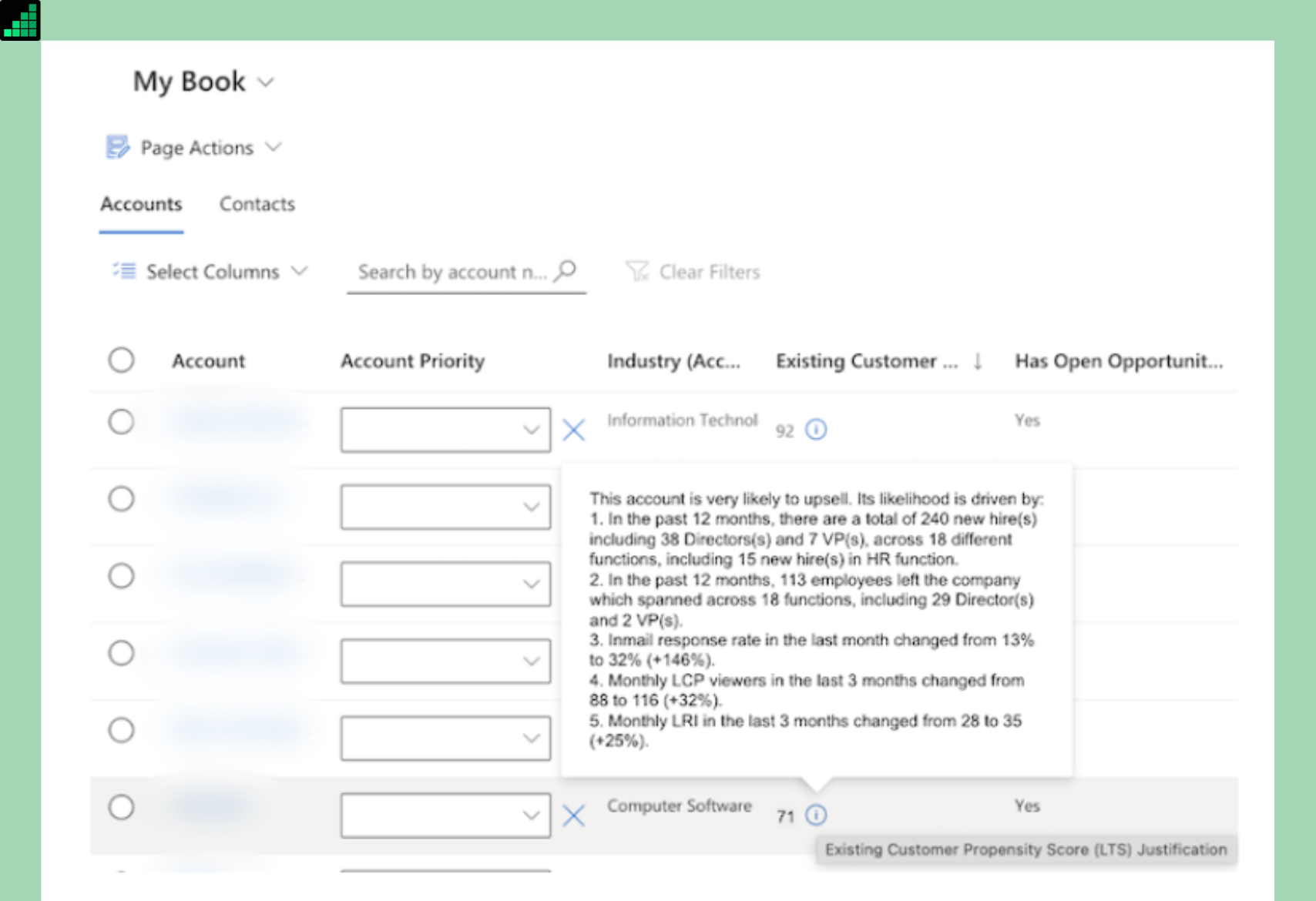
The result? An 8.08% boost in renewal bookings.
This wasn’t just about efficiency—it was about smarter selling.
By letting AI handle the heavy lifting, LinkedIn’s marketing teams and sales reps focused on leads that actually mattered, closing deals faster and eliminating wasted effort.
First-party data: The new fuel for B2B customer acquisition

Third-party cookies are on their way out, and with them, the old methods of tracking and targeting leads.
Today, first-party data isn’t just an advantage—it’s a necessity.
- Build owned audiences. With cookie tracking fading, companies must prioritize collecting direct customer data—email sign-ups, newsletter subscribers, and CRM-enriched insights—so they’re not reliant on rented platforms.
- Leverage direct interactions. Every conversation, demo request, and support inquiry is an opportunity to gather insights and personalize outreach. The more businesses invest in understanding their audience, the more effective their acquisition strategies become.
- Double down on social and organic content. In the absence of third-party tracking, social engagement and content marketing become essential. B2B buyers now expect valuable, high-quality content before they ever consider becoming a lead.
Companies that get ahead of this shift will have a direct line to their audience—while those clinging to outdated targeting methods will find themselves in the dark.
Here’s an example:
Agicap, a France-based cash management software provider, faced the challenge of standing out in a saturated market.
To address this, Agicap harnessed first-party data collected through its customer relationship management (CRM) system to gain deeper insights into its existing prospects and tap into customer retention.
By integrating this data with Google Ads via HubSpot, Agicap was able to re-engage qualified leads with tailored advertising campaigns.
This strategic use of first-party data led to a 10% increase in conversions and a 15% boost in revenue growth, all while maintaining cost efficiency.
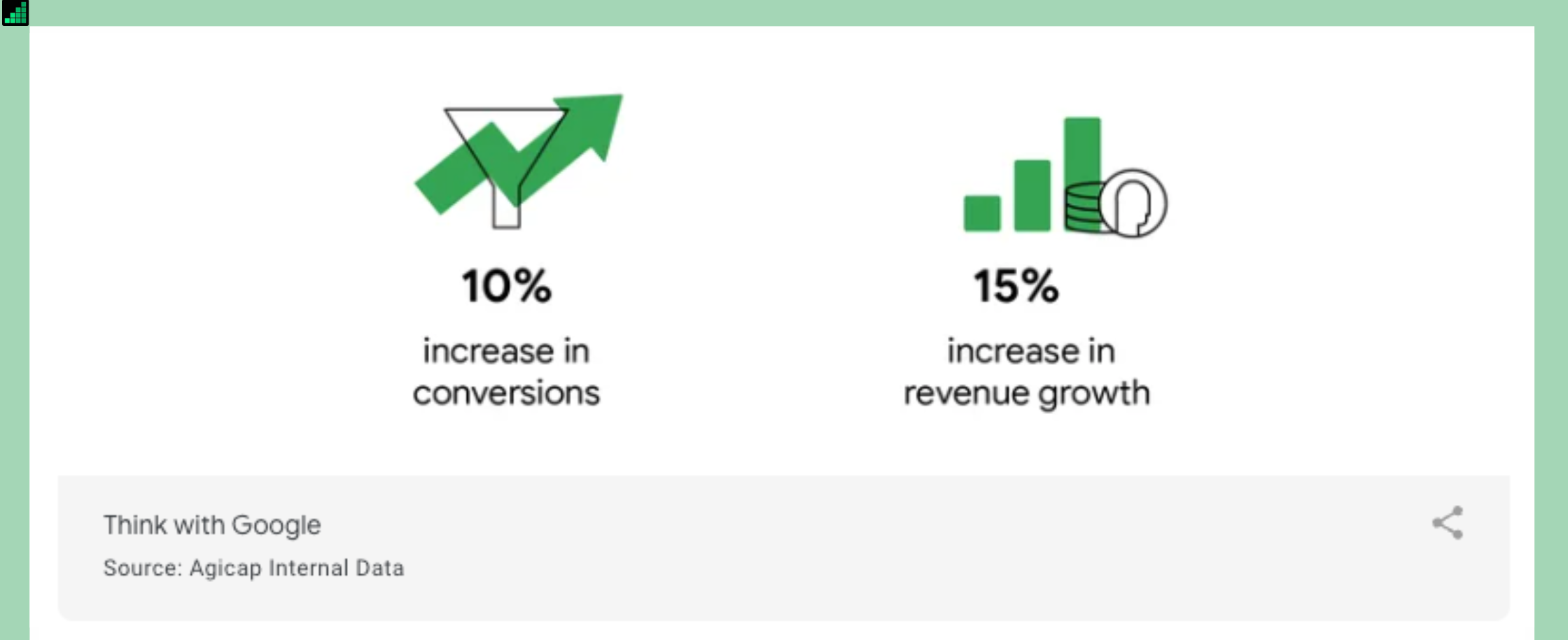
This example underscores the transformative impact of leveraging first-party data in B2B marketing.
By building owned audiences and personalizing outreach based on direct interactions, companies can enhance engagement and drive significant growth, even in competitive landscapes.
B2B influencer marketing: Leveraging personal brands to drive trust
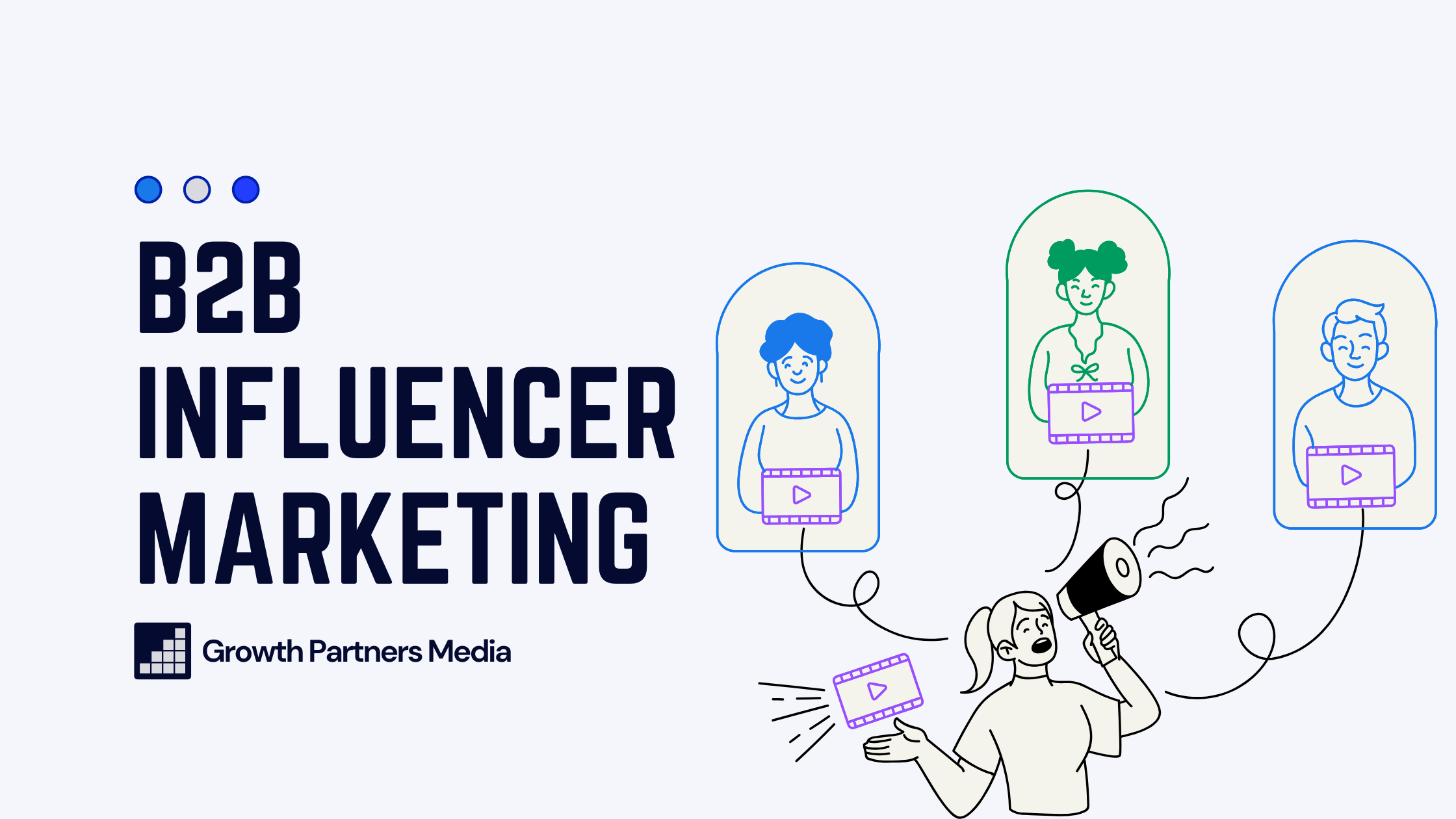
B2B buyers have made one thing clear: they trust people more than logos.
Traditional ads and corporate messaging are clinging on like a pop-up ad you can’t close while industry influencers and thought leaders are running the show—and buyers are actually paying attention.
A whopping 94% of B2B marketers claim influencer marketing is a successful strategy.
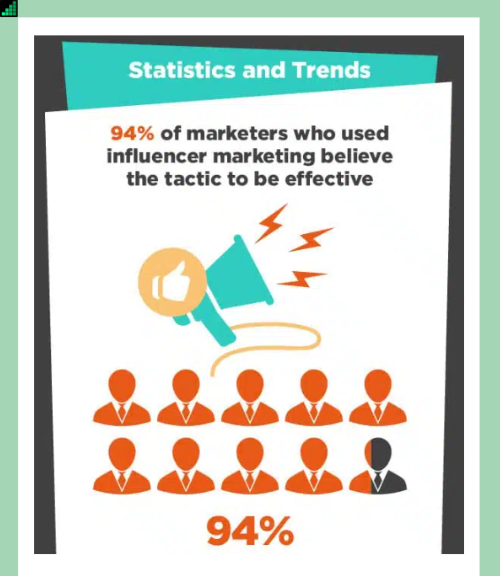
How?
- LinkedIn creators, niche podcasts, and YouTube are now core acquisition channels. Buyers want insights from real people with real expertise, not just polished marketing campaigns. Companies that collaborate with respected voices in their industry are seeing higher engagement and conversion rates.
- Employee-driven social selling is on the rise. Forward-thinking businesses are empowering their teams to build personal brands, engage in industry conversations, and establish trust with prospects—turning their employees into powerful marketing assets.
- Authenticity wins. B2B influencer marketing isn’t about scripted endorsements. It’s about genuine thought leadership, valuable content, and meeting buyers where they’re already paying attention.
The companies that recognize this shift and invest in relationships, not just reach, will dominate customer acquisition.
Here’s an example:
Dell Technologies wasn’t about to play the same old marketing game—so they flipped the script.
Instead of pushing another corporate sales pitch, they leaned into influencer marketing with “The Data Paradox” campaign.
The goal? Reach high-level decision-makers (CIOs, CXOs, and IT execs) in a way that actually resonated.
So, Dell teamed up with eight industry influencers—people their target audience already trusted—to break down their research in a way that felt real, relevant, and actually worth engaging with.
These influencers didn’t just post about the campaign; they co-created content—from an interactive eBook to social media insights that sparked conversations.
The result?
🚀 2X engagement compared to Dell’s previous benchmarks
🌍 Nearly 2 million people reached (without spamming inboxes)
💡 Dell positioned as a go-to thought leader on data strategy

This wasn’t some scripted endorsement. It was authentic thought leadership built on trust—exactly what works in B2B marketing today.
The takeaway?
Brands that partner with the right voices and deliver valuable (not just promotional) content win big.
Dell didn’t just market a report—they started a conversation.
And that’s what drives real B2B growth now.
Community-led growth & dark social: The new referral engine
B2B buyers aren’t just ignoring traditional sales tactics—they’re actively seeking advice elsewhere.
And where are they turning?
Private communities, peer groups, and exclusive invite-only spaces.
Here are a few reasons why:
- Buyers trust peers over sales reps. Whether it’s a private Slack workspace, Discord server, or Reddit thread, decision-makers rely on unfiltered recommendations from colleagues and industry peers—not sales pitches.
- Successful companies are building their own communities. The smartest brands aren’t just joining the conversation; they’re creating spaces where buyers can connect, learn, and engage. From LinkedIn groups to invite-only masterminds, brand-led communities are becoming a powerful acquisition tool.
- Engagement-first platforms drive conversions. Traditional ads are losing impact, while organic discussions on LinkedIn, Twitter, and niche forums are generating high-intent leads. The more a brand shows up authentically in these spaces, the more trust—and customers—they earn.
B2B customer acquisition efforts today aren’t about interrupting buyers.
It’s about being part of the conversations they’re already having.
And how do we know this works?
Because we do it ourselves.
At Growth Partners Media, we built Herd Links™, a service designed to help brands tap into dark social and community-led conversations.
We don’t just place links—we integrate brands into the discussions that actually influence buying decisions.
By securing mentions in niche subreddits and high-trust forums, we ensure your brand shows up where B2B buyers are already talking.
Here are a couple of examples:

And here’s an example from Quora that went semi-viral with 21K views on a “boring” topic:
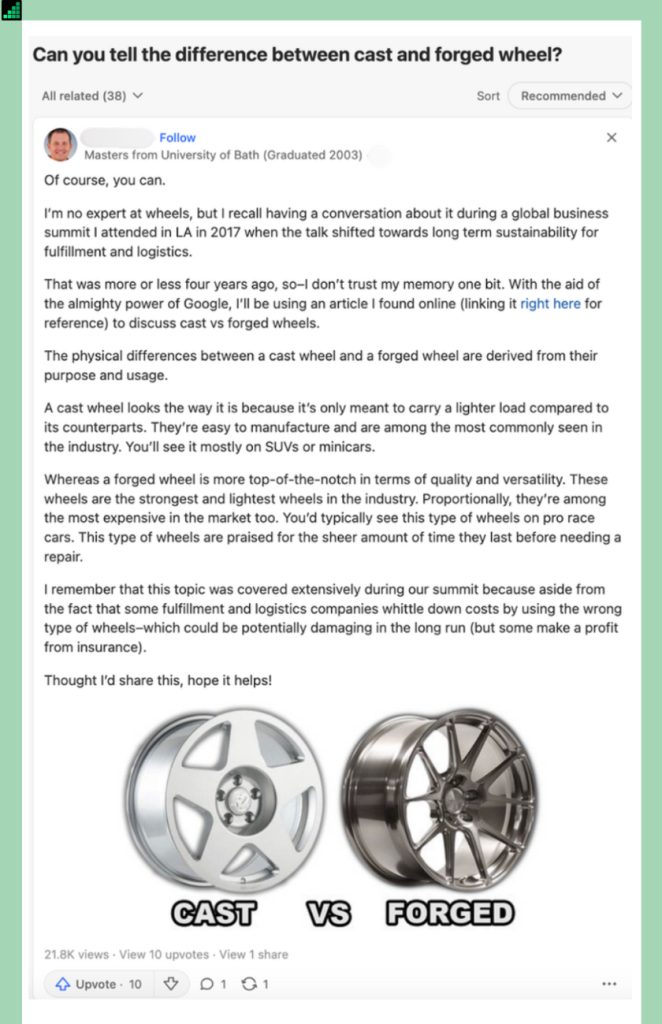
It also ranks at the top out of 38 other answers to the question. This is something we optimize for as part of the Herd Links™ service.
Notice how we’re adding value to the conversation and placing our client as the ultimate solution.
Organic recommendations – like getting name-dropped in a group chat full of decision-makers. 💪
You can learn more about Herd Links™ here.
Hybrid sales & self-serve models: The future of B2B client acquisition
The days of drawn-out sales calls and high-touch negotiations are fading.
Modern B2B buyers want to explore, evaluate, and purchase on their own terms—without unnecessary friction.
Here’s what changed:
- Self-serve is the new standard. More decision-makers prefer a hands-off buying experience where they can research, test, and commit without ever speaking to sales. No cold calls. No forced demos. Just seamless, intuitive access to what they need.
- Interactive experiences drive conversions. Companies investing in free trials, interactive demos, and on-demand product walkthroughs are speeding up their sales cycles. The easier it is for a prospect to see value up front, the faster they move toward purchase.
- Hybrid sales blends automation with the human touch. While automation nurtures and qualifies leads, strategic human interactions still play a critical role—especially at high-value conversion points. The future of B2B sales isn’t all-or-nothing; it’s tech-powered efficiency with human expertise where it matters most.
Here’s an example:
When Slack realized that B2B buyers hate jumping through hoops just to see if a product works, they ditched the traditional high-touch sales process.
Instead of forcing companies to book a demo, go through a sales rep, and sit through a long pitch, they rolled out a self-serve model that let teams sign up, test the platform, and upgrade whenever they felt like it.

No pressure.
No awkward sales calls.
Just instant access.
And it worked—big time.
Slack’s freemium-to-paid pipeline became a conversion machine, driving exponential growth with minimal friction.
And when enterprise paying customers needed custom solutions? That’s where their hybrid sales approach kicked in—strategic human touchpoints at just the right moment, ensuring high-value deals still got the VIP treatment.
This is the new recipe for a successful customer acquisition strategy: make buying effortless, let automation handle the low-hanging fruit, and step in only when it actually moves the deal forward.
Addressing Common Challenges in B2B Customer Acquisition
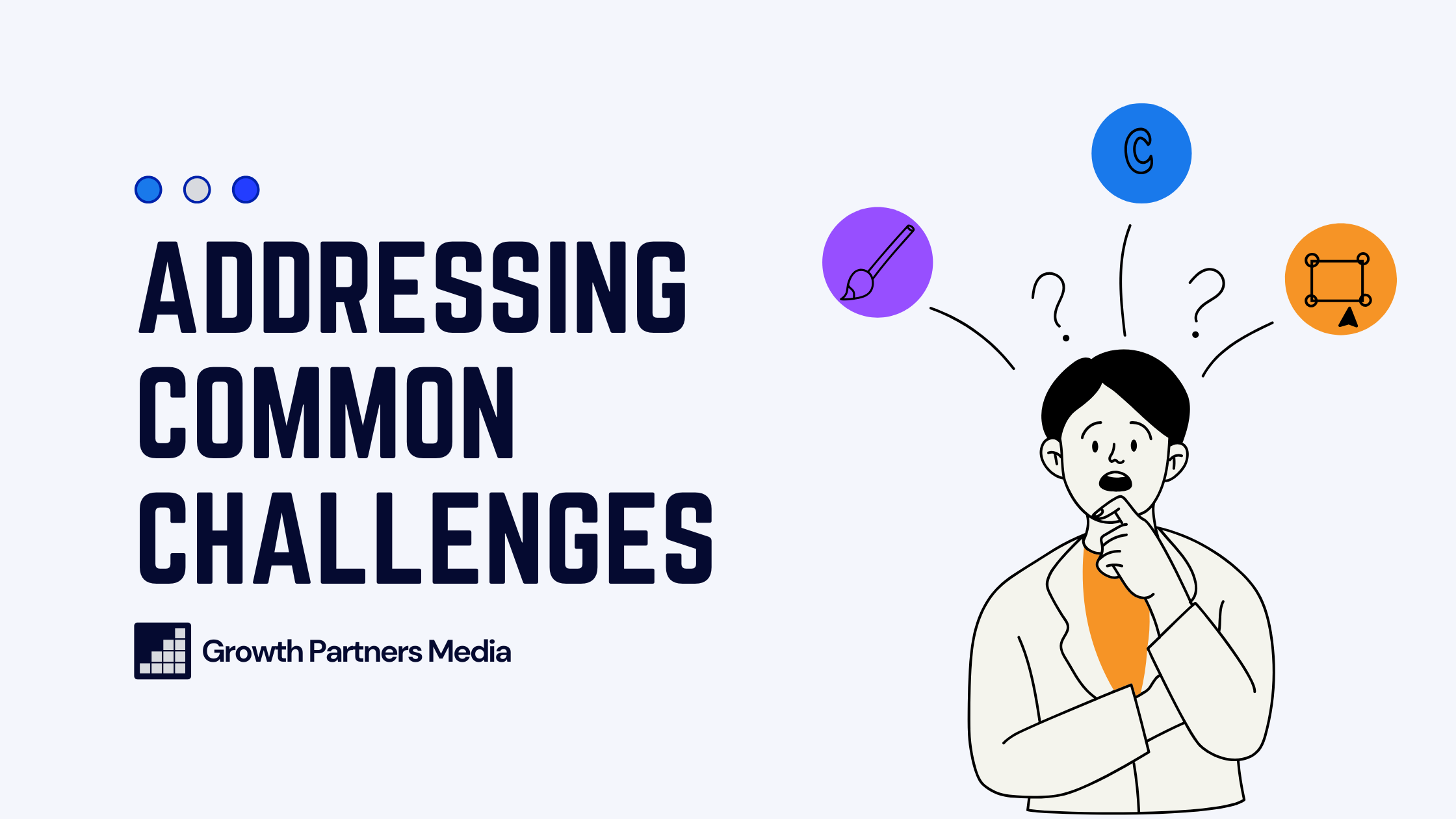
The landscape is shifting, and with it, B2B companies are facing new challenges in how they attract, nurture, and convert customers.
Here’s how to navigate some of the biggest concerns.
“AI is taking over marketing—how do I stay relevant?” 😨
AI is transforming B2B marketing, but it’s not here to replace human expertise—it’s here to enhance it.
The companies that thrive in the future will be the ones that use AI to scale personalization while keeping their messaging authentic.
Here’s what you can do:
- Leverage AI for efficiency, not for automation overload. Use AI-powered insights to deliver the right message at the right time, but let real people drive the conversations that matter.
- Double down on brand voice and human connection. In a world where content is being generated at scale, the differentiator isn’t speed—it’s authenticity. The more genuine your messaging, the stronger your impact.
“Data privacy laws are making it harder to track leads—what’s next?” ⚖️
With third-party tracking becoming obsolete, companies need to shift toward first-party data strategies and trust-based marketing.
- Build and own your audience. Email lists, newsletter subscribers, and private communities will be the new powerhouses of lead generation.
- Prioritize inbound marketing. Create content that earns trust—not just traffic. High-value, ungated insights will attract engaged buyers who want to hear from you.
“Is outbound sales dead?” 🤔
Not dead—just evolving.
The era of cold, impersonal outreach is over, but outbound sales still play a critical role when done right.
- Hyper-personalization and relevance win. The best B2B companies blend inbound demand generation with highly targeted, research-driven outbound strategies. Instead of blasting generic messages, they tailor outreach based on real buyer signals.
- Outbound works when it feels like inbound. If your message provides value, solves a problem, and is timed correctly, it won’t feel like an interruption—it will feel like an opportunity.
B2B customer acquisition isn’t getting harder—it’s getting smarter.
The businesses that adapt to these changes now will be the ones leading the market.
Final Takeaways: How to Win B2B Clients Now
B2B customer acquisition isn’t what it used to be—and that’s a good thing.
The companies that adapt to these shifts now will be the ones dominating their industries moving forward.
Here’s how to stay ahead:
✅ Leverage AI and automation to qualify and convert leads faster—without losing the human touch.
✅ Move from third-party to first-party data strategies to stay compliant and build a direct relationship with your audience.
✅ Invest in B2B influencer marketing and personal branding to drive trust-based customer acquisition.
✅ Engage in dark social, Slack communities, and LinkedIn groups where buyers actually research—not where marketers wish they did.
✅ Adopt hybrid sales and self-serve models to match modern B2B buying behaviors and reduce friction in the sales process.
The bottom line?
The old tactics are fading, but the opportunity to build stronger, smarter, and more sustainable customer acquisition strategies has never been greater.
The question is—are you ready to make the shift?
- 9 White-Hat Link Building Techniques For AI & Google (2025) - September 23, 2025
- How to Get Prestigious EDU Backlinks [Time-Proof Guide] - September 23, 2025
- SEO for Manufacturing: Latest Strategies for Search & AI - September 4, 2025

